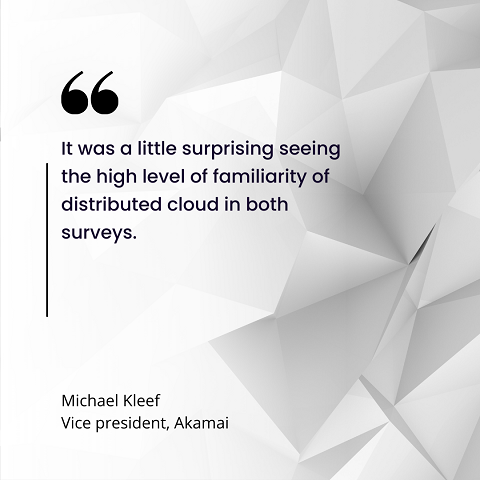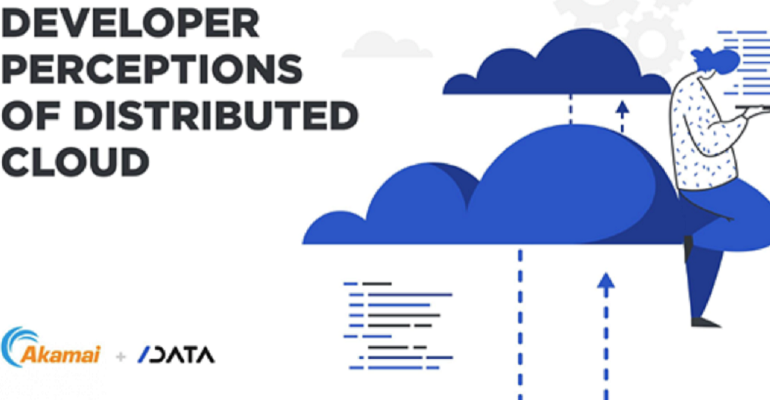The concept of distributed cloud is one that a number vendors have been promoting in recent years, including Google, Oracle, and Akamai.
The distributed cloud brings together multicloud concepts, such as being able to deploy on multiple public cloud platforms, along with the ability to unify management and include edge deployments.
A pair of research reports sponsored by Akamai report that both developers and IT decision-makers are seeing the value in the distributed cloud approach. "Distributed Cloud: Technology's Next Act," by ClearPath Strategies, surveyed 425 IT leaders; "Developer Perceptions of Distributed Cloud," by SlashData, surveyed 700 professional cloud developers.

Here are some of their key findings:
- 66% of IT decision-makers anticipate a growth in their utilization of distributed cloud services in the coming 12 months.
- Over 33% of IT decision-makers said that the advantages of distributed cloud play a mission-critical role in shaping their IT strategy.
- 55% of developers surveyed are already using distributed cloud services in some professional capacity.
- 36% of developers see high costs of implementation and maintenance as the biggest challenge with distributed cloud.
- Security is a key driver for distributed cloud adoption.
"It was a little surprising seeing the high level of familiarity of distributed cloud in both surveys," Michael Kleef, vice president of product marketing, developer advocacy, and competitive intelligence at Akamai, told ITPro Today. "But what really stuck out were the findings around security."
The ClearPath Strategies report found that 33% of IT leaders who plan to increase their use of distributed cloud over the upcoming year say security is one of the primary reasons for their increased use. Kleef added that when the researchers looked deeper at this cohort, 71% said distributed cloud provides better visibility into security issues.
The Difference Between Multicloud and Distributed Cloud
The idea of using multiple cloud providers is not an unusual one, as most organizations today use more than one cloud provider.
However, distributed cloud is more than just spreading workloads between providers, according to Kleef. It's decentralizing cloud resources and services to be physically closer to the data source or user while still being managed centrally, he said.
"Decentralization goes back to the roots of the internet and also the shift of mainframe to client/server computing," he said. "The industry got away from that over the past decade or so, and as the research and market signals show, the cloud is beginning to return to a more decentralized, distributed model."
Challenges for Distributed Cloud Adoption
The two reports identified a number of perceived challenges to distributed cloud adoption, including:
- high costs of implementation and maintenance
- potential security risks from distribution
- the complexity of managing distributed systems
In Kleef's view, one of the biggest challenges is inertia.
He noted that companies have spent the better part of the last decade locking themselves into a platform-centric cloud design through the convenience of proprietary services. As is the case with any other legacy application where the architectural choices that were made many years ago, it can become cost-prohibitive and complex to move away from those walled gardens — requiring application refactoring or rebuilding — so companies must continually be alert to vendor lock-in. However, all is not lost, in his view.
According to Kleef, companies can use what they have invested in already today to extend further to the edge and closer to users. Looking forward, the reports paint an optimistic view for future distributed cloud adoption.
"I expect we'll see further adoption of a more distributed, decentralized cloud model," Kleef said. "I also think we'll start to see more use cases arise — like we are in AI with modeling and inference — that take full advantage of both the best of the legacy centralized cloud model and the more modern distributed cloud model."
About the author
 Sean Michael Kerner is an IT consultant, technology enthusiast and tinkerer. He consults to industry and media organizations on technology issues.
Sean Michael Kerner is an IT consultant, technology enthusiast and tinkerer. He consults to industry and media organizations on technology issues.






